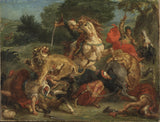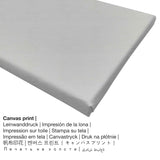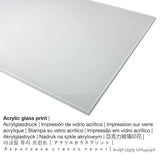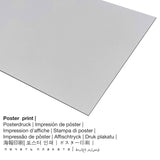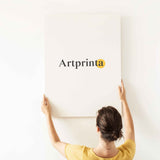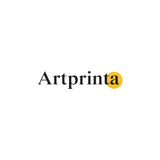Eugène Delacroix, 1855 - The Lion Hunt - ọmarịcha nka
Ụtụ gụnyere. Mbupu gbakọrọ na ndenye ọpụpụ.
Ozi mgbakwunye sitere na weebụsaịtị Nationalmuseum Stockholm (© Nwebiisinka - National museum Stockholm - National Museum nke Stockholm)
English: Delacroix often painted hunting scenes and animals fighting. This work is part of a lion hunt series he painted in the 1850s. The subject reflects a fascination for exoticism and the culture of the Muslim countries in North Africa. During a visit to Morocco in the 1830s, Delacroix had studied and made sketches of the landscape, horses and hunters on horseback – themes that were later used when he painted his lion hunts. These dramatic scenes, with their energetic compositions and warm hues, convey the new aesthetic ideals of the time. Jaktscener och kämpande djur är återkommande teman hos Delacroix. Den här målningen ingår i en serie lejonjakter som han utförde på 1850-talet. Motivet speglar tidens intresse för exotism och för kulturen i de muslimska länderna i Nordafrika. Under ett besök i Marocko på 1830-talet hade Delacroix studerat och tecknat såväl landskapet som hästar och beridna jägare – teman som senare vävdes in i hans målade lejonjakter. Dessa dramatiska motiv vittnar med sina energifyllda kompositioner och varma färger om nya estetiska ideal i tiden.
Ozi ndabere na mpempe nka izizi
| Aha nka nka: | "The Lion Hunt" |
| Nhazi nka: | sere |
| Okwu mkpokọta: | nkà nke oge a |
| Time: | 19th narị afọ |
| Emepụtara na: | 1855 |
| Afọ nka: | ihe dị ka afọ 160 |
| Agba na: | mmanụ na kwaaji |
| Nha izizi (ọrụ nka): | Ogologo: 57 cm (22,4 ″); Obosara: 74 cm (29,1 ″) Ekebere: Elu: 81 cm (31,8 ″); Obosara: 100 cm (39,3 ″); Omimi: 12 cm (4,7 ″) |
| Ụlọ ihe ngosi nka: | National Museum nke Stockholm |
| Ebe ngosi nka: | Stockholm, Obodo Stockholm, Sweden |
| website: | www.nationalmuseum.se |
| Ụdị nka nka: | ngalaba ọha |
| Site n'aka: | Nationalmuseum Stockholm na Wikimedia Commons |
Ihe omuma ihe nka
| Aha onye nka: | Eugene Delacroix |
| okike nke onye nka: | nwoke |
| Obodo onye nka: | French |
| Ọrụ: | onye na-ese ihe |
| Mba onye si: | France |
| Otu nka: | omenkà nke oge a |
| Ụdị nke onye na-ese ihe: | Ihunanya |
| Ndụ: | 65 afọ |
| Afọ amụrụ: | 1798 |
| Obodo amụrụ: | Saint-Maurice, Val-de-Marne |
| Nwụrụ n'afọ: | 1863 |
| Nwụrụ na (ebe): | Paris |
Banyere edemede a
| Bipụta ụdị ngwaahịa: | ọmarịcha nka |
| Mmeputakwa: | dijitalụ mmeputakwa |
| Production usoro: | Mbipụta UV / dijitalụ |
| Ihe ngosi: | emere na Germany |
| Ụdị ngwaahịa: | mmepụta ihe na-achọ |
| A na-atụ aro iji ngwaahịa eme ihe: | ihe ndozi ụlọ, nka mgbidi |
| Ndozi onyonyo: | usoro odida obodo |
| Oke akụkụ: | ogologo ruo obosara 4: 3 |
| Mmetụta nke akụkụ akụkụ: | ogologo bụ 33% ogologo karịa obosara |
| Materials: | mbipụta akwụkwọ mmado (akwụkwọ kwaaji), mbipụta kanvas, mbipụta enyo acrylic (nwere ezigbo mkpuchi iko), mbipụta ọla (aluminium dibbond) |
| Nhọrọ nha nke akwa akwa n'elu etiti ihe na-agbatị (mbipụta kwaaji): | 40x30cm - 16x12", 80x60cm - 31x24", 120x90cm - 47x35", 160x120cm - 63x47" |
| Acrylic glass print (nwere ezigbo mkpuchi iko) nhọrọ: | 40x30cm - 16x12", 80x60cm - 31x24", 120x90cm - 47x35", 160x120cm - 63x47" |
| Mpempe akwụkwọ mmado (akwụkwọ kwaaji) nha: | 40x30cm - 16x12", 80x60cm - 31x24", 120x90cm - 47x35" |
| Mbipụta nke aluminom (ihe aluminom): | 40x30cm - 16x12", 80x60cm - 31x24", 120x90cm - 47x35" |
| Nhazi mbipụta nka: | enweghị etiti |
Nhọrọ ihe ngwaahịa dị
Anyị na-enye ụdị dị iche iche nha na ihe maka ngwaahịa ọ bụla. Nha na ihe ndị a bụ nhọrọ anyị na-enye gị maka nkeonwe:
- Aluminom ihe eji eme ihe: This is a metal print manufactured on aluminium dibond with an impressive effect of depth - for a modern look and a non-reflective surface. A direct Direct Print on Aluminum Dibond is your best introduction to fine prints with alu. For your Direct Aluminium Dibond print, we print the favorite work of art onto the aluminium white-primed surface. Colors are luminous and bright, the fine details appear very clear, and the print has a a matte appearance that you can literally feel.
- Kwaaji: The printed canvas, not to be mistaken with a canvas painting, is an image printed from a UV direct printing machine. A canvas print creates a nice and pleasant appearance. Canvas prints are relatively low in weight, meaning that it is easy to hang up your Canvas print without the use of additional wall-mounts. A canvas print is suited for any kind of wall.
- Mbipụta iko acrylic na-egbuke egbuke (nke nwere ezigbo mkpuchi iko): An print on acrylic glass, often described as a an art print on plexiglass, makes the artwork into brilliant décor and is a good alternative option to canvas or aluminium dibond fine art replicas. The artwork is being made with state-of-the-art UV direct printing machines. This creates sharp and vivid colors. The major advantage of a plexiglass art print is that sharp contrasts and painting details become identifiable thanks to the very fine gradation. Our plexiglass protects your custom art replica against light and heat for many decades.
- Mbipụta akwụkwọ mmado (ihe kwaaji): The Artprinta poster print is a printed cotton canvas with a slight structure on the surface. It is suited for placing the fine art print in a special frame. Please note, that depending on the size of the poster print we add a white margin 2-6 cm round about the print in order to facilitate the framing with a custom frame.
Ozi ndabere ngwaahịa nka
The Lion Hunt bụ ihe nka mere Eugène Delacroix in 1855. The over 160 years old original was painted with the size - Height: 57 cm (22,4 ″); Width: 74 cm (29,1 ″) Framed: Height: 81 cm (31,8 ″); Width: 100 cm (39,3 ″); Depth: 12 cm (4,7 ″) and was crafted with the medium oil on canvas. Besides, this artpiece can be viewed in in the Nationalmuseum Stockholm's digital art collection, which is Sweden's museum of art and design, a Swedish government authority with a mandatet o preserve cultural heritage and promote art, interest in art and knowledge of art. With courtesy of: Nationalmuseum Stockholm & Wikimedia Commons (ikike ngalaba ọha).Kridi n'obi nke artpiece bụ ndị a: . Ọzọkwa, itinye n'ọnọdụ nke mmepụta dijitalụ bụ odida obodo ma nwee oke nke 4: 3, which implies that the length is 33% longer than the width. The painter Eugène Delacroix was an artist from France, whose style was primarily Romanticism. The Romanticist painter was born in 1798 in Saint-Maurice, Val-de-Marne and died at the age of 65 in 1863.
Important information: We try our utmost in order to describe our products in as much detail as possible and to exhibit them visually in our shop. Nevertheless, the pigments of the print products and the printing might differ slightly from the image on the screen. Depending on your screen settings and the condition of the surface, color pigments might not be printed one hundret percent realistically. Bearing in mind that our art prints are printed and processed by hand, there might also be minor differences in the motif's exact position and the size.
© Nwebiisinka - ikike ọgụgụ isi nke, Artprinta (www.artprinta.com)

